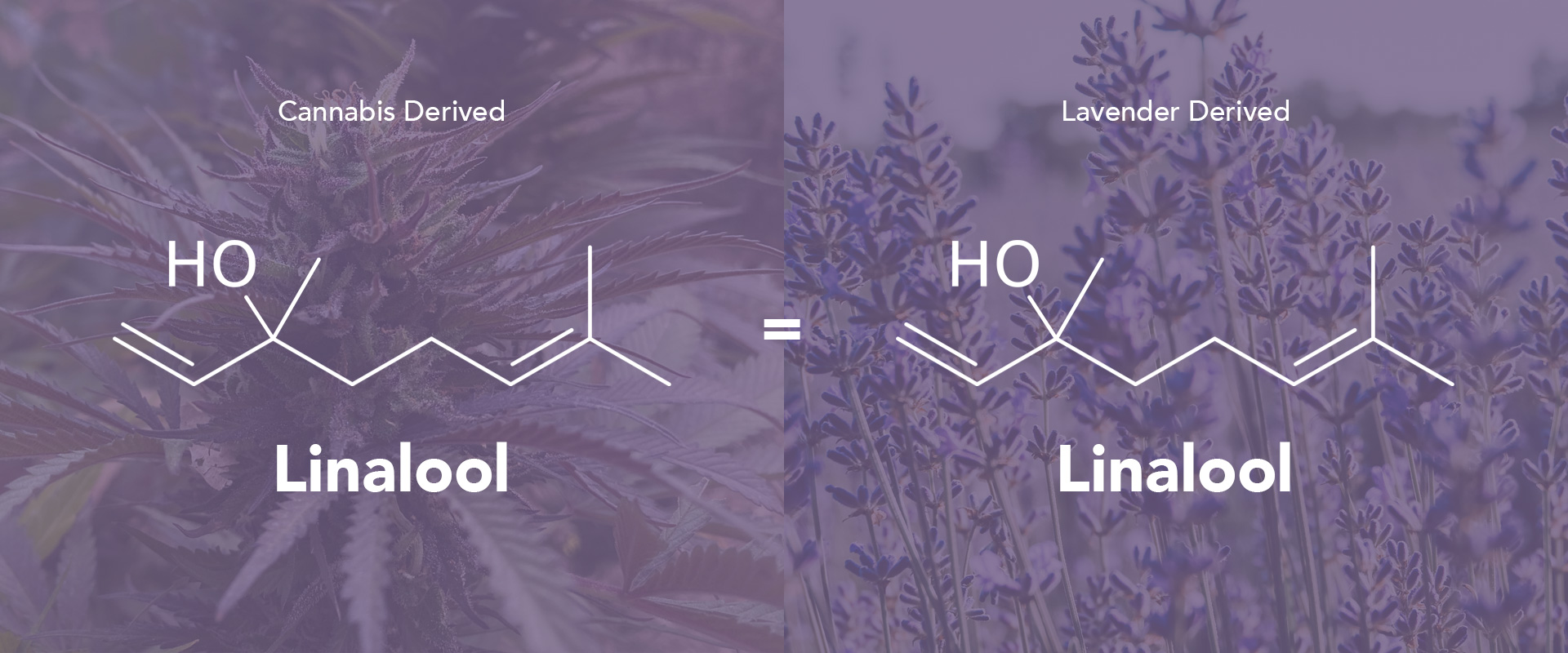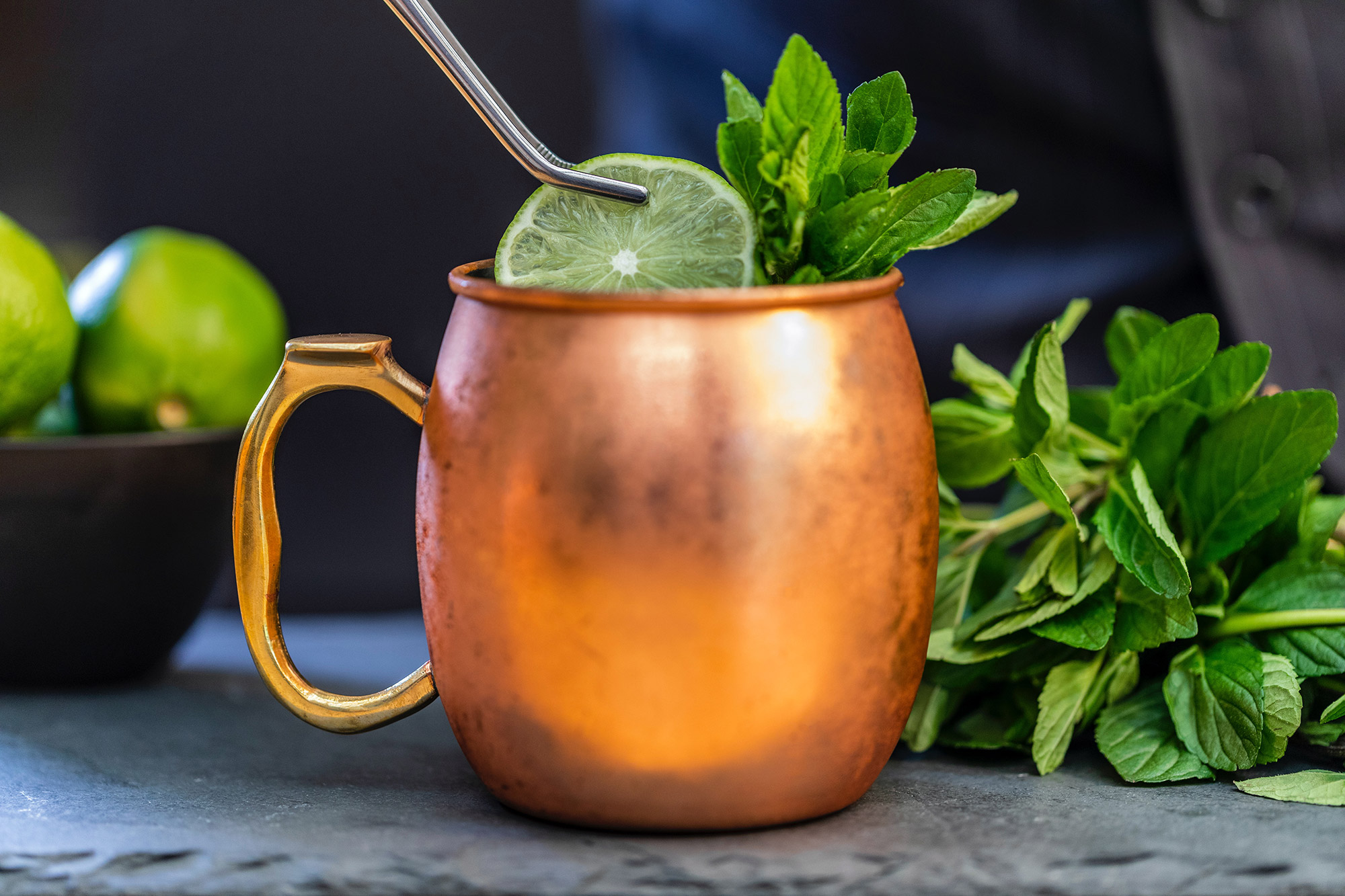Benefits of Cannabis Derived Terpenes

You Mean There’s More to Cannabis Than THC and CBD?
As mainstream acceptance of cannabis use continues to grow at an extraordinary rate, so does our understanding of how the constituents of this plant affect us. If you’re a canna-consumer, you’re probably familiar with terms like “cannabinoids”, “THC” and “CBD”. While cannabinoids indeed play a large role in the effects of cannabis, current research suggests that other naturally occurring compounds of cannabis also likely contribute to your experience.
Terpenes aren’t exactly a new discovery nor are they unique to cannabis. In fact, nearly all plants produce terpenes. Terps, as they’re sometimes referred to, are the compounds responsible for a plant’s aroma and in some cases, taste. For instance, the terpene linalool is most commonly recognized as the compound that produces the soothing fragrance of lavender. Another example is the distinct scent of black pepper, which is produced in part by the terpene b-caryophyllene.
Plants, cannabis included, don’t just produce terpenes for our olfactory enjoyment though. It is hypothesized that plants produce terpenes in an evolutionary attempt to protect themselves from nature’s elements, deter pests, and even provide protection from certain bacteria. Although modern science has recently shed more light on the subject of terps, humans have been experimenting with the potential medical benefits of terpenes for hundreds of years.
What Can Terpenes Do for Me?
While we need more data to definitively assess the potential benefits of terpenes, current data suggests that there’s potential for numerous uses. For example, when researchers studied the terpene limonene, anti-anxiety-like effects were reported in animal models. Though the name may not ring a bell, the scent surely will. Limonene, which is believed to be the second-most abundant terpene in nature, produces the aroma associated with citrus fruits like oranges or lemons. Another example of potential benefits produced by terpenes is demonstrated by a-bisabolol. This terpene, which produces the calming scent that we associate https://www.ncbi.nlm.nih.gov/pmc/articles/PMC7120914/with chamomile, has shown to work synergistically with antibiotics when used as a treatment against certain bacterial infections.
Of course, researchers have only cracked the door in terms of discovering the potential benefits and possibilities that terpenes hold. For cannabis users specifically, this is an exciting time as evidence also suggests terpenes may alter the effects of cannabis. As scientists expand their understanding of terpenes, so is the ability expanded to dial in your cannabis experience. If you’re still making your buying decisions based on “strains”, sativas, or indicas, we recommend checking out our article that walks users through the process of incorporating terpenes into their decision making process.

Cannabis Derived Terpenes Vs. Plant Derived Terpenes
As you begin having conversations around terpenes, it is easy to fall into marketing campaigns built around touting cannabis derived terpenes. The fact is, there’s really no hard evidence that cannabis derived terpenes (CDTs) provide a different experience or effects than plant derived terpenes (PDTs). Although some people, budtenders included, may try to convince you that CDTs work better for them, it is important to realize that these accounts are subjective.
The nomenclature alone should make you stop and think before fully trusting clever marketing campaigns. If you find yourself questioning the difference, consider this: when you smell a lavender flower, which we know is mainly linalool, the scent of that compound is the same as when you smell a cannabis flower that is high in linalool. Terpenes — linalool in this case — from lavender or cannabis, are not only the same on a molecular level, but they are also the same on an aesthetic level. The chemical structure, scent, and flavor, and effects of terpenes remain the same regardless of if they are produced by cannabis or any other plant.
Cannabis derived terpenes are also significantly more expensive than plant derived terpenes and as you might expect, this added cost is passed along to you, the customer. Additionally, CDTs are rather wasteful. For example, if a brand wants to extract a single “pure” terpene from a Blue Dream cannabis variety, they’re going to require a copious amount of plant material to do so. Even then, the extraction process will likely include other commingled cannabinoids and terpenes which processors may not be able to entirely remove from the extracted material.
Given that plant derived terps are not only less expensive, but more accessible than cannabis derived terpenes, brands maintain the ability to adjust the concentration without necessarily affecting your price point. This translates to a more flavorful, enjoyable, and affordable experience for you, the end user.
Why Would Anyone Want Cannabis Derived Terpenes in Their Product?
Good question!…*insert sarcasm*. Although some individuals may describe a more synergistic experience when CDTs are used, thus theoretically resulting in an amplified entourage effect, this is purely anecdotal with no supportive data. Furthermore, the process of isolating an individual terpene from cannabis is not one that has been perfected. This means that although someone may have a cannabis extracted terpene that they believe is pure, in reality they likely have a blend of cannabis derived terpenes. By altering the terpene ratios during extraction, not only is a degree of “purity” lost, but the new ratio of terpenes may not necessarily work well together. This could potentially muddy the experience for the consumer.
Fine Tuning Your Terpene Experience
If you’re reading this article, then chances are that you’re interested in experimenting and fine tuning your use of terpenes. You also likely recognized that this can be a difficult undertaking considering the significant variation and inconsistencies of most cannabis products.
That said, recent advances behind the scenes of the cannabis industry have given brands the ability to provide consumers with cannabis-infused products that maintain laboratory precision dosing that’s consistent from batch to batch. Products like Koan Cordials are revolutionizing the relationship people have with cannabis. By taking much of the guesswork out of incorporating cannabis into daily life, Koan Cordials are not only leading the charge of normalizing cannabis, but they’re also giving control back to the consumer.
Due to the variability of cannabis products, thus leading to unpredictability, many consumers have been forced to treat cannabis like a light switch — ON or OFF. Koan Cordials have instead turned the experience into one that more closely resembles a variable dial. For instance, if you are seeking a sense of harmony and balance, you may opt to use their Balance blend. For occasions that call for a deeper, more insightful experience, you will find your key in their Wonder or Play blends. Choosing your mood isn’t the only convenience that Koan brings to the table as Koan Cordials are available for home delivery (California residents only) in the event that your local dispensary is out of stock.
When it comes to the growing debate of CDTs and PDTs, regardless of where you stand, we recommend considering the following. All plants and the compounds they contain, are beautiful. Whether your terpenes come from cannabis or from other members of the plant world, what matters most is the ability to utilize these compounds in an intentional and controlled manner. Plant derived terpenes allow for higher levels of control, are less expensive, less wasteful, and are wonderful tools when creating or experiencing products that have an experiential target.
This article is for informational purposes only and not to be used as medical advice. Please speak with a medical professional before making any changes to your diet, medications, or daily routine. These statements have not been evaluated by the FDA. These products are not intended to diagnose, treat, cure, or prevent any disease.
References:



